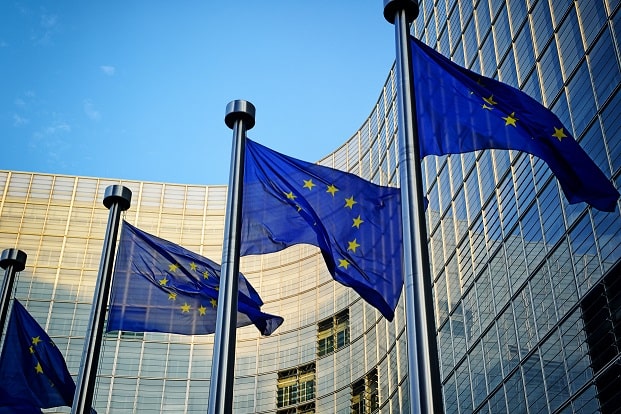Rules around packaging waste recycling
The UK has an extended producer responsibility regime in force for the recycling of waste packaging. This means that all businesses which make or use packaging – excluding certain smaller companies – have a legal obligation to ensure that a proportion of that they place on the market is recovered and recycled.
The regime first came into force in 1997 and was updated in 2007 with the introduction of the Producer Responsibility (Packaging Waste) Regulations 2007. There have been a number of amendments to the regulations since 2007.

Under the regulations, packaging producers can meet their recycling obligations by buying recycling evidence, known as Packaging Waste Recovery Notes (PRNs), or Packaging Waste Export Recovery Notes (PERNs), from accredited reprocessors or exporters. The system is therefore known to many in the industry as the PRN system.
The obligation applies to all those involved in the packaging supply chain – ranging from raw material manufacturers to retailers – which have an annual turnover above £2 million, and which handle more than 50 tonnes of packaging a year. Organisations can also be obligated if they are part of a group that collectively meets the thresholds. Those obligated companies with a turnover of below £5 million (but above £2 million) can choose to use a simpler allocation method when completing their obligation calculations. Many obligated companies sign up with a Producer Compliance Scheme (PCS), who will buy evidence on their behalf and take on their legal compliance.
The number of PRNs that companies have to buy is determined by targets which are set by the UK government, known more commonly as ‘business targets’. So far, business targets have been set for all materials up until 2020 (see targets page). The targets cover paper and card, glass (of which a certain proportion must be sent to remelt), aluminium, steel, plastic and wood and there is also an overall recycling and recovery target, for which a certain percentage must be met through recycling.
In March 2019 the UK Government has recently launched a consultation, which closed in May, on options to reform the UK Packaging Waste system. This document, along with other consultations held at the same time, will significantly alter the way in which the UK packaging waste system operates in the future, with significant changes and cost impacts for packaging producers. The intended start date for the new system is the beginning of 2023
Directive

The PRN system is designed to enable the UK to meet its targets under Directive 94/62/EC on packaging and packaging waste (Packaging Directive). The Directive required that the UK recovered at least 60% of all packaging waste by December 31 2008 as well as meeting a number of other targets, which the UK has achieved.
The Circular Economy Package included proposals to amend a number of European Waste Directives, including the Packaging Directive. These amendments were published in June 2018, and include new targets to be met in 2025 and 2030.
Unlike the systems in use in many other European countries, the PRN system is a market-based supply and demand mechanism, designed to reduce costs for obligated companies while still ensuring compliance with the European Directive. The system effectively subsidises packaging recycling and means that if the price of recyclables drops, the PRN generally increases in value, thereby providing some protection for the market.
Obligation
Those who handle packaging and or packaging materials can calculate their obligation based on the amount of packaging they place on the UK market in the previous calendar year. Producers’ obligations are split between different roles within the supply chain, each with a different percentage of responsibility: raw material manufacturer 6%; converter 9%; packer/filler 37%; seller 48%. Importers have a “rolled up” obligation for packaging imported into the UK.
| OBLIGATIONS: Raw material manufacturer |
Converter | Packer/filler | Seller (retailer) |
| 6% | 9% | 37% | 48% |
The raw material manufacturer makes raw materials for packaging manufacture (such as a steel mill). A packaging converter converts the raw material into packaging, (such as making sheets for cans). A packer filler puts products into the packaging or packaging around the product (such as a company putting baked beans in a can) and the seller supplies an end user, (such as a retailer selling the cans of baked beans to the consumer).
Calculation
Companies must account for all activities which are carried out on the packaging they handle. The calculation is therefore: packaging placed on the market in the previous year multiplied by responsibility percentage multiplied by national business target. The calculation then provides each obligated business with a fixed tonnage obligation at the start of each year that they must fulfil by proving that they have funded the equivalent tonnage of packaging recycling, thus providing the demand within the market mechanism.
For each tonne of packaging material recycled or recovered, the final reprocessor or exporter is entitled to produce a PRN or PERN (Packaging Export Recovery Note) certificate, provided they are audited and accredited by the enforcement agencies.
Materials which are exported for recovery are treated equivalently to UK processing as long as the end destination can be shown to the enforcement authority to have broadly equivalent standards. The majority of producers either join a Packaging Compliance Scheme, who will take on their legal obligation and obtain the PRNs on the producer’s behalf, or alternatively the Producer can register direct and can then obtain these certificates themselves, as evidence of meeting their legal obligations.
The Advisory Committee on Packaging (ACP) have produced the PRN System Guide which provides a detailed explanation of the UK PRN system.
Reporting
To monitor fulfilment of the national targets, producers, PCSs and accredited reprocessors and exporters have legal obligations to report certain data to the relevant enforcement agency. All information is maintained on the National Packaging Waste Database (NPWD) and reported to the European Commission.
The Packaging (Essential Requirements) Regulations 2015
As well as the PRN system, there are also regulations which are intended to ensure that packaging placed on the market meets certain requirements. The requirements include ensuring that:
- The volume and weight of packaging is the minimum to maintain safety, hygiene and acceptance of the packed product for the consumer
- The packaging adheres to the recyclability / recoverability requirements
- The packaging design minimises the levels of hazardous or noxious substances which may be emitted at the end of life
- The packaging adheres to limits on heavy metal substances (calcium, lead, mercury and hexavalent chromium
Further information about The Packaging (Essential Requirements) Regulations can be found here. The UK Government intends to review this legislation later in 2019.
Enforcement
The Packaging Regulations in the UK are enforced by:
• England – the Environment Agency (EA)
• Wales – the Natural Resources Body for Wales (NRW)
• Scotland – the Scottish Environment Protection Agency (SEPA)
• Northern Ireland – the Department of Agriculture, Environment and Rural Affairs (via the Northern Ireland Environment Agency [NIEA])
The Essential Requirements Regulations are enforced by local authority Trading Standards services





